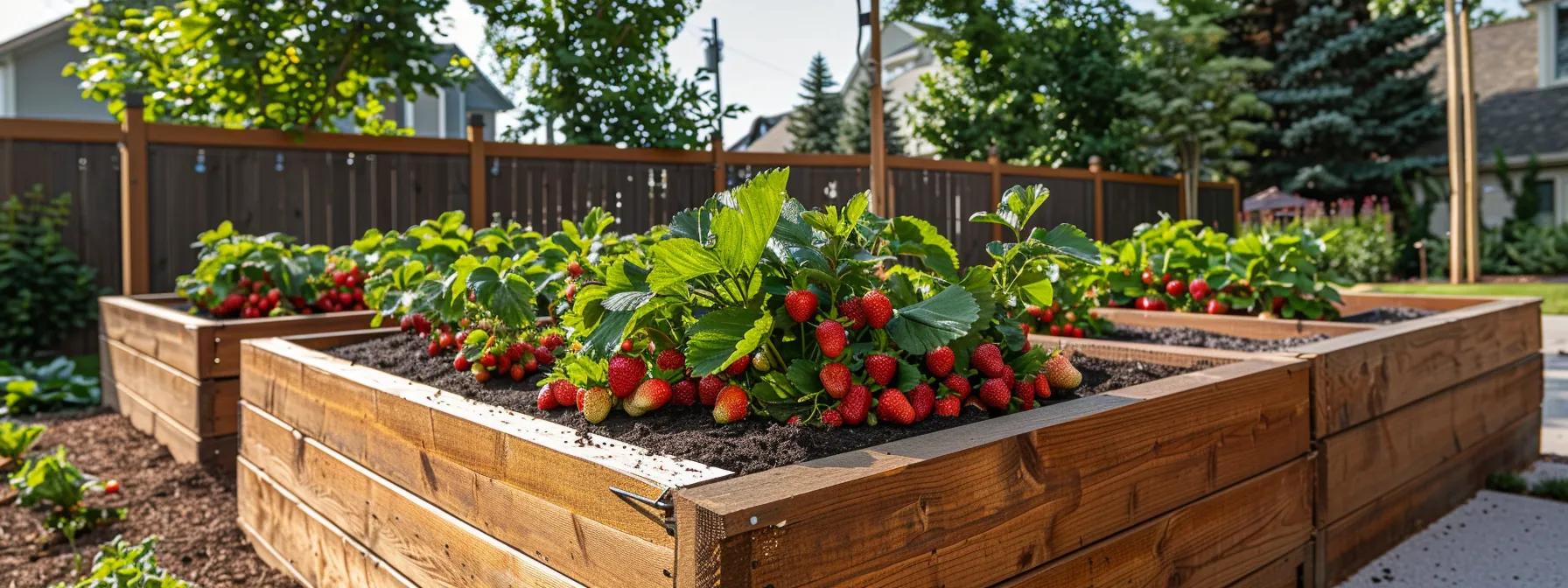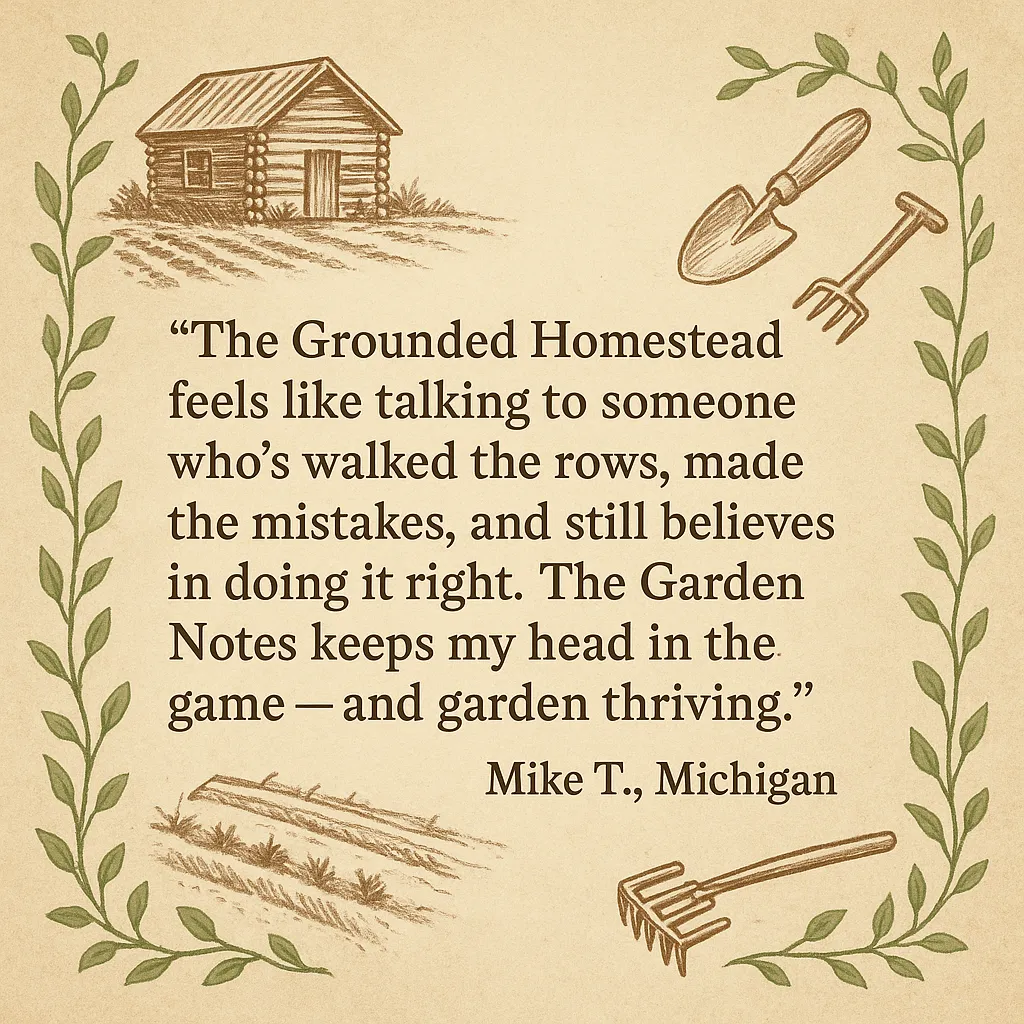
How to Build a Low-Maintenance 4-Bed Strawberry System
How to Build a Low-Maintenance 4-Bed Strawberry System
Set it up once. Eat for years.
INTRO: The Strawberry Patch That Didn’t Break Me
The first year I grew strawberries, I made it harder than it had to be.
I planted too many in one bed. Watered too often. Fought weeds like it was my full-time job. And come June, I still didn’t have the harvest I expected. The berries were decent, but the system? Exhausting.
That’s when I remembered Grandma’s quiet rhythm. She never grew strawberries in one big patch. She had four small beds, spread out across the back garden, each in a different stage. Every year, she moved the plants down the line—starting fresh in one, letting another rest. It wasn’t fancy, but it worked. And more importantly: it lasted.
What follows is a system based on hers, adapted for modern homesteads—whether you’ve got an acre in the country or a balcony in the city. It’s simple, productive, and designed to take care of you as much as you take care of it.
SECTION 1: Why 4 Beds Instead of 1?
A single bed might feel easier at first, but over time, it becomes harder to manage. Plants crowd. Soil wears out. Disease sets in.
The 4-bed system solves that. Each bed serves a different role:
Year 1: Plant your fresh starts.
Year 2: Those plants mature and begin real production.
Year 3: Peak yield.
Year 4: Final harvest before removing the oldest plants and reconditioning the soil.
Then the cycle restarts. You always have one bed producing, one peaking, one starting, and one resting. It spreads your labor, evens out harvests, and keeps your soil healthy.
SECTION 2: Layout Blueprint for Simple Management
For a standard setup:
Use four 3' x 8' raised beds, spaced with 2–3' walking paths.
Position them where they get at least 6–8 hours of sunlight daily.
Run them north to south if possible for even light coverage.
Beds should be close enough to water easily but with room to work comfortably.
🌱 USDA Zone Tip: This system works best in Zones 4–8, but with adjustments to mulch and winter covering, you can adapt it nearly anywhere.
SECTION 3: Urban vs. Rural Setup — Tailoring the System to Your Space
🏙️ Urban Setup (Containers, Balconies, Small Yards)
Use grow bags, stackable planters, or deep pots.
Rotate using colored tags or labeled containers (Year 1, 2, etc.).
Use lightweight soil blends and self-watering trays or drip irrigation kits.
For low-pollination areas (like balconies), attract bees with lavender or hand-pollinate with a soft brush.
🌾 Rural Setup (In-Ground or Larger Beds)
Space your 4 beds for easy access by tools or wheelbarrow.
Add deer fencing or row covers if wildlife is an issue.
Use cover crops (like clover) in your rest bed to boost fertility.
Add compost bins or leaf mulch nearby for easy seasonal feeding.
SECTION 4: Choosing the Right Strawberry Varieties
Different strawberries fit different roles.
Variety Best Use Notes Seascape / Albion Urban / Containers Day-neutral, high yield, small root base Jewel / Chandler / Honeoye In-Ground / Raised Beds Heavy producers, vigorous runners Tristar / Mara des Bois Mixed Use Compact with great flavor
🧑🌾 Jeff's Pick: I use Jewel in my main beds for bulk harvest and Seascape in containers for my morning walk-and-snack berries.
SECTION 5: Building the Beds (or Containers) for Low Maintenance
Raised Beds:
Start with a base layer of cardboard or old feed bags to block weeds.
Fill with a 50/30/20 mix of compost, aged manure, and loamy topsoil.
Top with straw, pine needles, or shredded leaves as mulch.
Containers:
Ensure good drainage holes and at least 10" depth.
Use high-quality organic potting mix with worm castings or kelp meal added in.
Install a micro-drip kit or self-watering system if possible.
💡 Grandma’s Tip: “Water the roots, not the leaves. Keeps ’em sweet, not sick.”
SECTION 6: Planting the Cycle
Here's how the rhythm works:
Year 1 → Bed A: Plant bare-root or potted strawberry starts in early spring.
Year 2 → Bed B: Transplant runners from Bed A in late summer or early fall.
Year 3 → Bed C: Transplant from Bed B.
Year 4 → Bed D: Last harvest before clearing the bed in fall or early spring.
Rotate again by replanting Bed A.
Label your beds clearly and keep a notebook or printable tracker to mark which year each bed is in.
SECTION 7: Seasonal Care & Runner Management
Spring: Clean up mulch, compost lightly, inspect crowns.
Summer: Water deep, thin runners, top up mulch.
Fall: Root strong runners in nursery pots or directly into next year’s bed.
Winter: Cover with straw or floating row cover if you're in Zones 4–6.
🎯 Runner Rule: Allow 3–4 healthy runners per plant to root. Snip the rest to maintain strength and airflow.
SECTION 8: Soil Longevity & Refresher Tips
In Beds: After Year 4, pull plants and amend heavily with compost or a light cover crop like crimson clover. Let the bed rest or grow something else (like beans or greens).
In Containers: Dump and remix the soil with fresh compost, worm castings, or a new bag of potting mix every 2–3 years. Clean your containers thoroughly.
Compost Tip: Use strawberry trimmings, leaves, and soft berries in your compost pile or bury them in the rest bed for organic cycling.
SECTION 9: Built-in Pest & Disease Prevention
The rotation model itself fights common problems:
Problem Prevention Built In Crown Rot Fresh soil and spacing each year Fungal Spread Fewer old leaves, rotated locations Aphids & Mites Generational separation blocks spread Nutrient Burnout Rest and refresh every fourth year
Bonus protection: Interplant marigolds or nasturtiums for natural pest control.
SECTION 10: Yield Expectations & Companion Plants
Per plant: 1–1.5 quarts in years 2–3
Per 3x8 bed: 15–20 lbs across peak season with good care
Companions to Consider:
Year 1 bed: Basil, lettuce, or borage
Resting bed: Bush beans or nitrogen-fixing cover crop
Tower planters: Try mint or alpine strawberries on the bottom row
SECTION 11: Seasonal Calendar & Printable Tools
Season Task Spring Compost, replant bed A, prune dead growth Summer Water, harvest, mulch refresh Fall Transplant runners, prep next bed Winter Clean up, cover beds, reset labels
🧾 Free Download: Printable 4-Bed Strawberry System Tracker & Seasonal Checklist
SECTION 12: FAQs & Troubleshooting
“What if I skip a year?”
Re-balance the cycle—just let one bed rest longer and restart from where you left off.
“Can I plant flowers or herbs with strawberries?”
Yes, especially shallow-rooted ones. Just don’t overcrowd crowns.
“What if pests still show up?”
Try neem oil spray or beneficial bugs (like ladybugs). Keep mulch dry and airflow high.
“How do I remember which bed is which?”
Wood-burn labels, painted rocks, or simple garden markers work well. You can even number your beds like Grandma did.
CLOSING: Work With Nature, Not Against It
A strawberry patch can be a blessing or a burden—depending on how you set it up.
This 4-bed system saved me hours, reduced stress, and brought back joy to something that had started to feel like a chore. You don’t need fancy tools or endless space. You need rhythm, care, and a willingness to plan a little farther ahead.
Build what lasts. The fruit is just the beginning.
“Build houses and settle in them; plant gardens and eat what they produce.” — Jeremiah 29:5
Looking for more professional guidance & homesteading resources?
Explore our trusted guides to learn more about growing healthy food, managing your land, and building lasting systems for your homestead. Whether you're looking for planting tips, seasonal checklists, or natural solutions that actually work—we’ve got you covered.
Start with these helpful reads:
Everything to know about Strawberries:
Start with Strawberries: Ground Your Garden with Fruit that Grows Back
6 Common Strawberry Plant Diseases and How to Treat Them Naturally
The 6 Pests That Wreck Strawberry Crops—and How to Beat Them Naturally
Beyond Straw: Choosing the Right Mulch for Every Strawberry Bed
Runner Management 101: Multiply Your Strawberry Patch with Purpose
Frost, Flood, and Fungus: Protecting Strawberries in Extreme Weather
The Best Strawberry Varieties for Continuous Summer Harvests
Top 14 Practical Uses for Fresh Strawberries (Beyond Jam)
Start a U-Pick Strawberry Business (Even on 1 Acre)
How to Fertilize Strawberries for Yield, Flavor, and Runner Control
Strawberries in Small Spaces: Balcony, Border, and Vertical Growing Techniques
Wild Strawberries vs. Cultivated: Should You Grow Fragaria vesca?
The Complete Guide to Propagating Strawberries: Growing Strawberries from Seed


Facebook
Instagram
X
Youtube